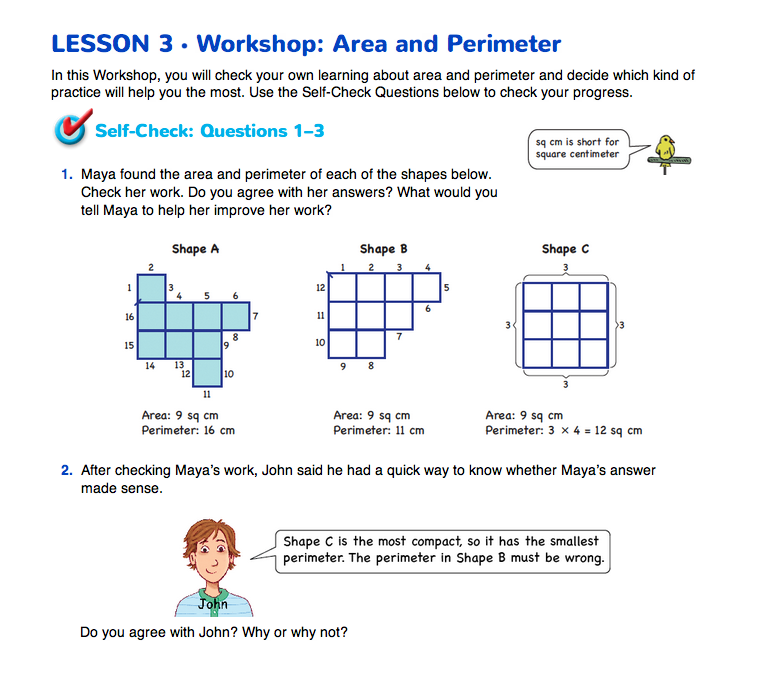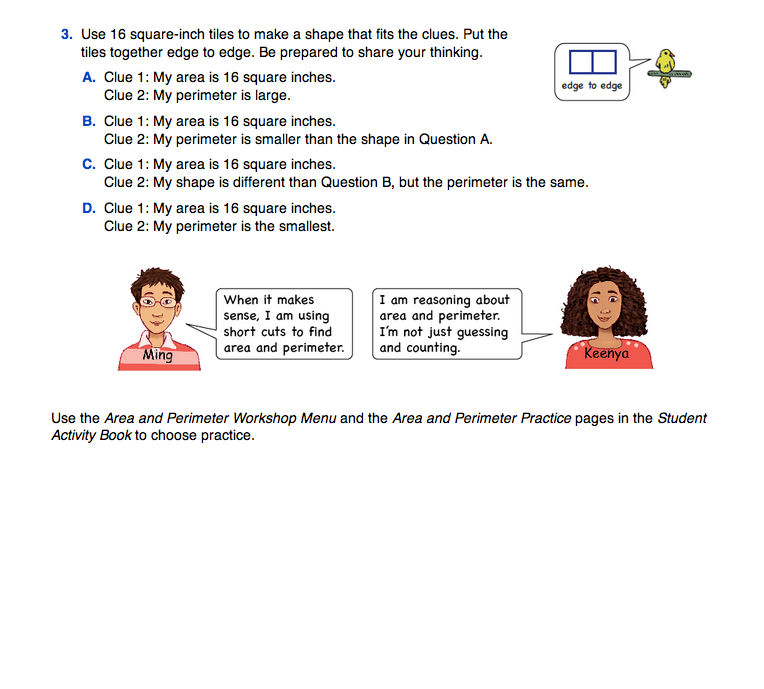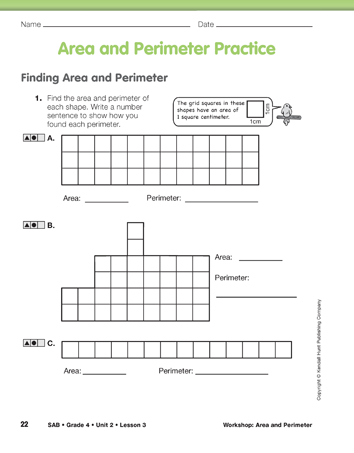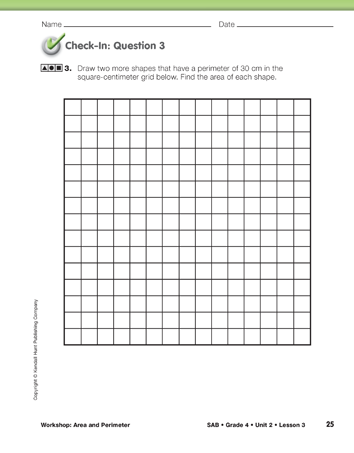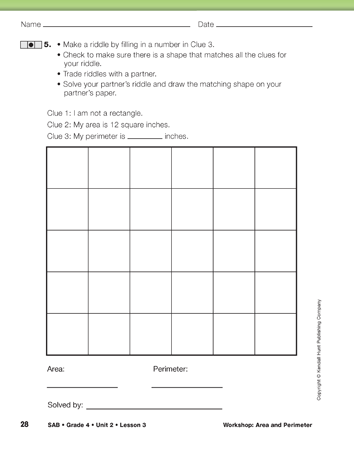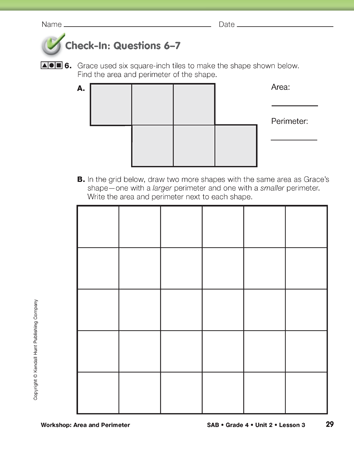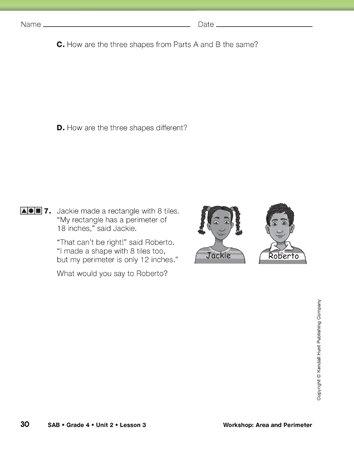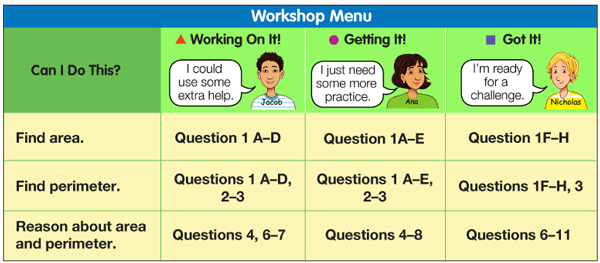Workshop: Area and Perimeter
Est. Class Sessions: 1–2Developing the Lesson
Self-Check Area and Perimeter Concepts. Ask students to refer to Self-Check: Questions 1–3 in the Student Guide. Tell students that they will use these questions as a self-check on the concepts they have been working on: area and perimeter. These questions serve two purposes. First, they clearly communicate the content of the related targeted practice to students. Second, they help students quickly self-assess their progress with the Expectations to help them choose which problems to work on in the workshop.
After students complete Self-Check: Questions 1–3, discuss each of the questions with the whole class. Ask students to share their solutions and explain their reasoning. Facilitate a class discussion of students' solutions. Next, have students think about each question in the left-hand column of the Area and Perimeter Workshop Menu in the Student Activity Book. Ask students to review their work on the Self-Check Questions to decide which problems to choose from the following groups:
- Students who are “working on it” and need some extra help should circle the problem set marked with a triangle (
 ). These problems provide scaffolded support for developing the essential underlying concepts as well as some opportunities for practice.
). These problems provide scaffolded support for developing the essential underlying concepts as well as some opportunities for practice. - Students who are “getting it” and just need more practice should circle the problem set marked with a circle (
 ). These problems mainly provide opportunities to practice with some concept reinforcement and some opportunities for extension.
). These problems mainly provide opportunities to practice with some concept reinforcement and some opportunities for extension. - Students who have “got it” and are ready for a challenge or extension should circle problems marked with a square (
 ). These problems provide some practice and then move into opportunities for extension.
). These problems provide some practice and then move into opportunities for extension.
Check students' choices to see how well they match your own assessment of their progress on the related Expectation(s). Help students make selections that will provide the kind of practice they need.
Match groups of students who have chosen similar sets of problems from the menu. Have students work with their groups to solve the problems they chose. Again, flexibility is important. If problems seem either too easy or difficult for students, they should adjust their choices from the menu. Students may need to work with different groups of students as they progress through the different sections of the workshop.
Area and Perimeter Workshop. As students work in small groups on the problems in the Area and Perimeter Practice pages, circulate to evaluate and assist students as they practice. Help students find problems that are challenging but not frustrating to them. (Minis not shown here are in the Answer Key.)
After solving a problem, ask students to explain their reasoning or show you how they found their answers.
As students solve Questions 1–2, ask:
As students solve Question 4, ask:
Some riddles that students write in Question 5 may have more than one correct answer. Let students know that their partners may draw a shape that is not the same as the shape they had in mind (and tested with square-inch tiles) when writing the riddle. It may still be a correct solution to the puzzle, however. When this happens, have both partners test both shapes to see if both are correct matches for the clues.
Allow groups of students to work as many of the problems from the Workshop Menu as are needed to make progress toward the Expectations. It is not always necessary that every student complete every problem. Completion of problems is dependent upon individual strengths and weaknesses with the Expectations. Students should, however, spend enough time solving the problems to achieve the practice and concept building that they need. It is more important to solve several problems thoroughly than all of the problems quickly.














